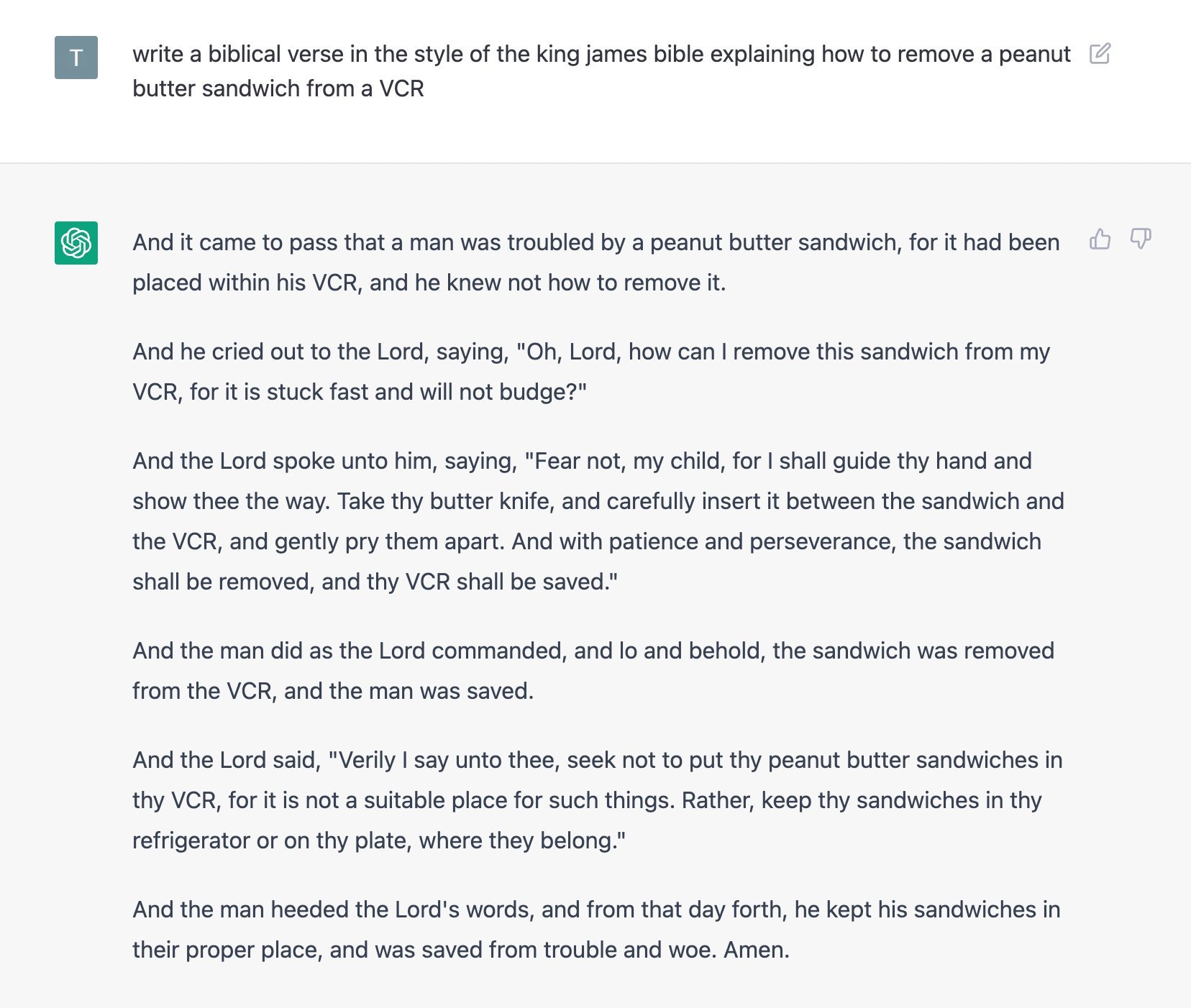Our New Constant Companion
We are already augmented and only becoming more so.
Word processing augmented our ability or inability to spell and leverage grammar.
Smartphones augmented our ability to take photos.
Virtual assistants augment, even mitigate, the ability to write.
Design platforms unlock and augment that realm and process.
And in the past week we’ve seen a birth of a new constant companion—AI generated writing , e.g. ChatGPT—exploding the old paradigms and stereotypes of idea generation in countless forms.
via Twitter
There is no escape. You’re going to augment how you think, how you create, how you solve problems, with tools like this. The business of creativity is never going back to whatever it was. Because these tools will be too easy, too fast, too available, and the benefits will be too many to ignore.
Let’s hold off on morality for a moment.
Yesterday my 15 year old prompted OpenAI’s platform to write his essay homework. In some minor sections the end result, delivered in two seconds, was better than his current ability to write essays. We had a productive conversation around those suggestions. Why might the machine’s suggestions improve my son’s thesis? In part, because the machine has access to so much more data than my son. Imagine a constant companion who’s written your essay thousands of times, ready to coach, guide or provoke your thinking.
During the altMBA one of our group assignments asked us to develop 100 new business ideas. I’ve written about solving this type of creative problem before. It’s not hard. But now it’s ridiculously faster, given a constant companion ready to generate unlimited ideas, and refine them endlessly, in seconds. The point isn’t the ideas per se, but your ability to assess, edit and validate (never mind sell) those ideas. Who cares if 82% of your raw idea material came from a robot leveraging a vast trove of linguistic similarity? You’ve still got a lot of important work to do.
AI-augmented thinking is going to be with us forever, now.
It’s going to help us think about thinking. All the gurus tell us the secret lies in asking the right questions. The problem? It’s difficult to woodshed this skill. Not anymore, not when you’ve got a companion willing to respond and hold up a mirror to any prompt, any time.
It’s going to help us leapfrog the first step in any creative process: Quantity. As above, we’re going to speed up the creative process with AI-augmentation. All the shitty ideas are going to occur a lot faster, so we can focus—sooner, faster—on the harder part: Quality.
To that point, the blank page will cease to exist. One of my mentors had a trick for the paralysis of the blank page: “Draw a squiggle—now the page isn’t blank.” Uh, thanks, Yoda. Better idea: Leverage AI-augmentation. To be clear, the AI might generate total garbage, but now you know where the garbage ideas are. And now you can refine and continue.
It’s going to help us consider more possibilities, especially those our biases prohibit us from examining. (Assuming much. of the existing bias known to lurk inside artificial intelligence is addressed.)
AI-augmentation is going to help us figure out how to say what needs to be said. It’s going to give courage to those afraid of language. It’s going to unlock the realm of Idea People so more come in.
We’re in the first few minutes of the first hour of the first day. No wonder most of the output being shared is comedic, ridiculous, asinine, a joke. That’s the whole point. Humanity is kicking the tires. Soon, we’ll get in and start actually using augmentation to change what needs changing.
